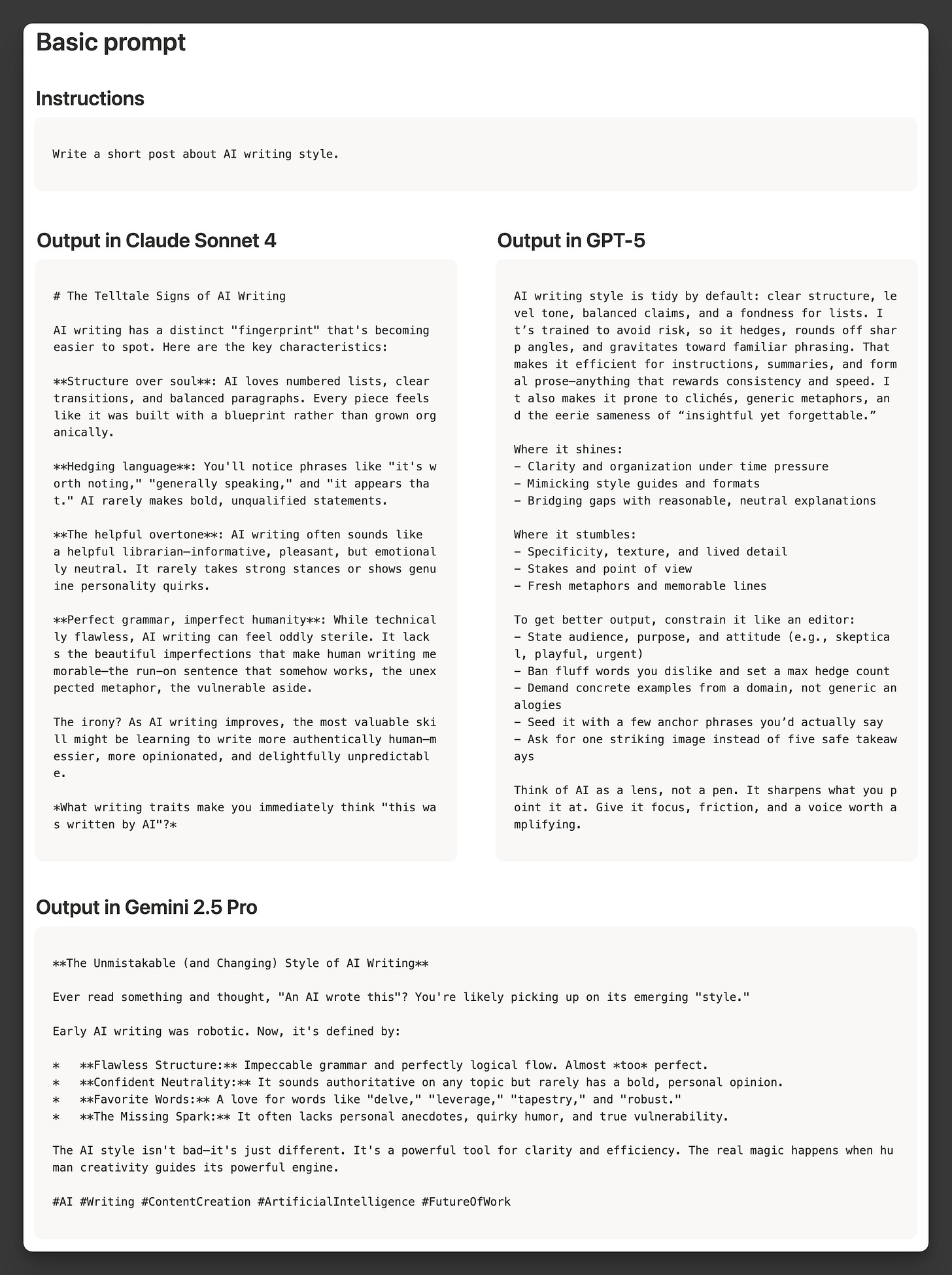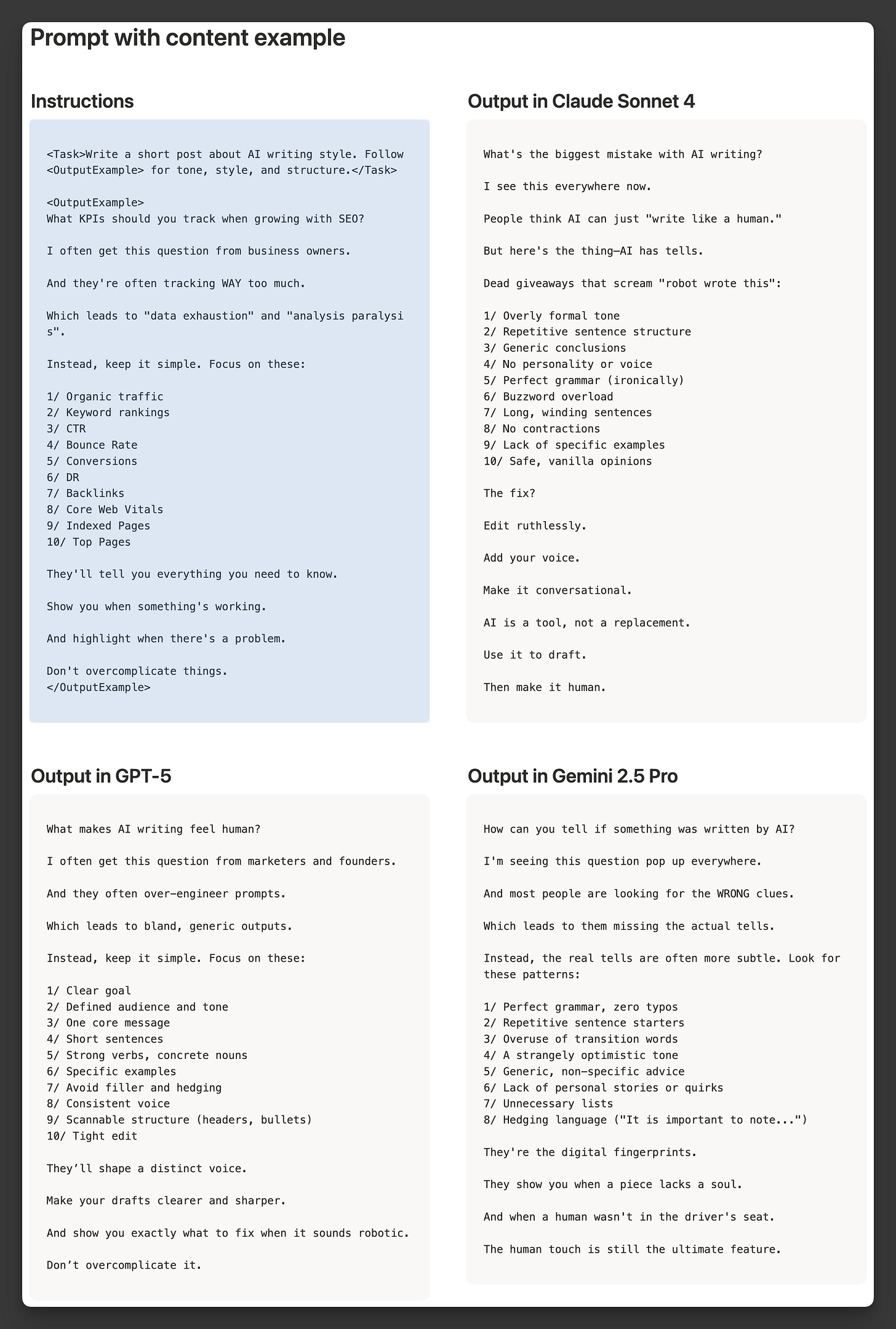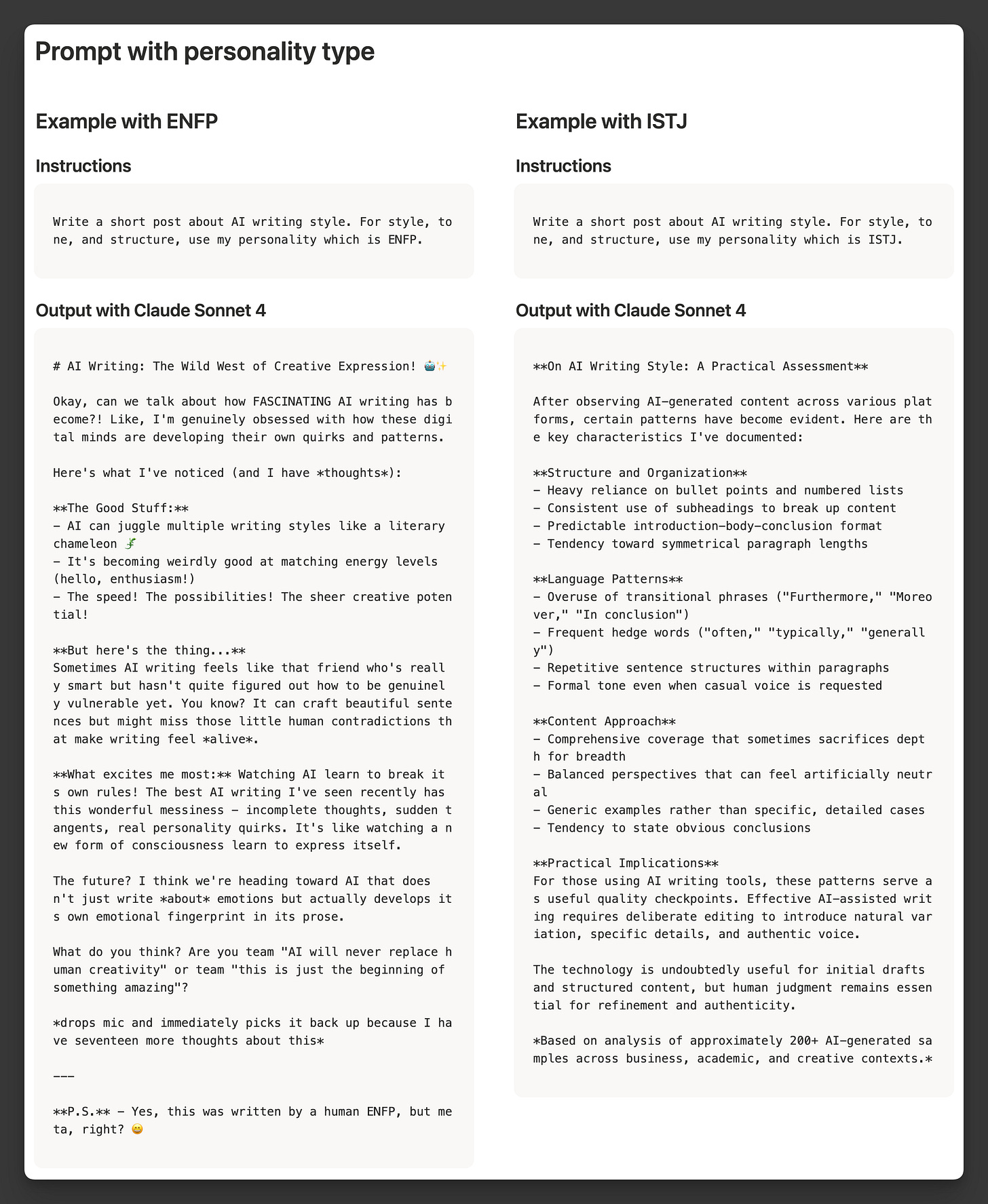AI writing style that doesn't suck (with examples)
How I've refined my context over time to create content that almost feel human.
Which side are you on? Against using AI for content (and other things) or do you embrace AI as much as possible?
For me it’s the same debate as CGI, it’s not that people don’t like CGI, they hate bad CGI.
If people really hated AI content, you wouldn’t see millions of views on AI images and videos.
I had a bet with a friend to see if he would notice when I would switch to use mostly AI to write one of my newsletters (not this one). I gave him 4 newsletters before telling him. When I told him, he was surprised he didn’t notice.
Why? Because I refined my approach over the last year and I still work on the narrative arc myself.
Good AI content is fine. Your competitive advantage should be on taste, not crafting everything by hand.
Let’s explore some of the things I’m doing to improve the writing style of AI.
NB: This post isn’t about the substance of AI content but about form and style.
What does basic AI writing look like?
Let’s start with analyzing what you get with a very basic prompt.
The most famous sign of AI slop has become the em dash — to my dismay — as well as some specific expressions/words/punctuation the average person doesn’t use.
I hate AI expressions so much. Especially this one: “Remember: The AI style isn’t bad—it’s different.”
Cringe.
I remember how I never believed AI could help me write content when ChatGPT was released almost 3 years ago. Newest models are much better though.
Still em dashes, still structure inconsistencies. But fewer cringy expressions.
Here’s an example of what basic prompting gets you.
Look at GPT-5’s output: 1 big paragraph for the intro, followed by 3 bullet lists. If it tries to be readable with the bullet lists, why not have a readable intro?!
Gemini has the better structure here but has pretty cringy words and expressions.
Content examples
The quickest way to get the right structure isn’t a styleguide in my experience but content examples.
While current LLMs generally stick close to the examples, I find Claude tends to be the closest, maybe just because its default tone is better than the others. Especially for long form examples.
Here’s a simple example with a LinkedIn post from a popular creator, and see how they stick to the example with barely any instructions.
But you’re stuck with picking the right example each time. So a mix of content examples with a styleguide explaining what’s good about each example is way more flexible.
Styleguides
The way I did my styleguide was that way. I fed different examples and highlighted I liked about these examples.
I also gave it my personality type. You might think it’s a bit esoteric but it seems to work well. Here’s an example with MBTI types (which I don’t like for personal development, but it’s not the purpose here).
Look at the output for different personalities. Find one that is tolerable, then ask AI to generate a styleguide based on it and edit it manually. I find it to be a good addition on top of the content examples and rules based on these examples.
But don’t think making a styleguide is a one-time thing. Little details you haven’t notice will creep up and get on your nerves. Be sure to add more rules as you use it.
Another thing I do is listing dos and donts. Here’s one for sentence rhythm. It’s one of my favorite rules because predictable pacing plagues AI.
### Vary your beats
- Do: Short. Then long. Then stop. Then twist.
- Avoid: Predictable pacingAllow/disallow lists
I’ve tried to make a list of things I like and don’t like about AI writing but then I found this one from Rob Lennon and it’s been serving me well.
## Disallowed words, phrases, and punctuation list
- em-dashes “—”
- exclamation points “!”
- fluff
- crickets (“launch to crickets” or other lack of engagement)
- here’s the thing
- here’s the kicker
- void (e.g. shouting into the void)
- authentic
- vanity metrics
- pitch-slapped
- through the noise
- puzzle
- lightning
- magic
- superpower(s)
- superstar(s)
- double-edged sword
- fast track
- strike gold
- secret weapon, weapons, arsenal
- harness
- thrive
- skyrocket
- art/science analogy (“Storytelling isn’t just an art. It’s a science.”)
- soar (“watch your engagement soar”)
- savvy
- transformative
- buzzword
- integrity
- game-changer
- forget (“forget vanity metrics”)
- evolve
- unlock
- unleash
- elevate
- delve
- in a world of
- I used to… then I…
- unleashed the power of
- thank you for it (“your audience will thank you for it”)
- It not about {thing}… it’s about {something different}
- your truth (“share your truth”)
- ethical (or any other statements that are overly concerned with ethics)Cutting and stitching
I’m never 100% satisfied with what AI produces. And you shouldn’t be either.
When editing, I’m always going to catch some words and expressions I don’t like and change them.
Something I’m also doing is generating multiple outputs either from different content examples or from different LLMs and stitch together the best parts.
Remember: AI content isn’t bad—it’s a skill issue on your side.
I 100% prefer to spend 2 hours editing rather than 1 hour on a draft and 1 hour editing.




